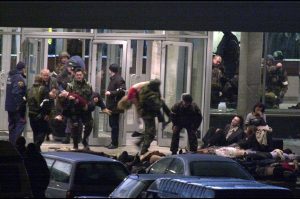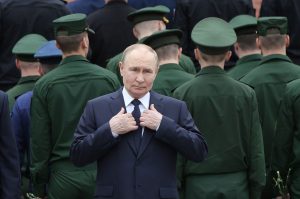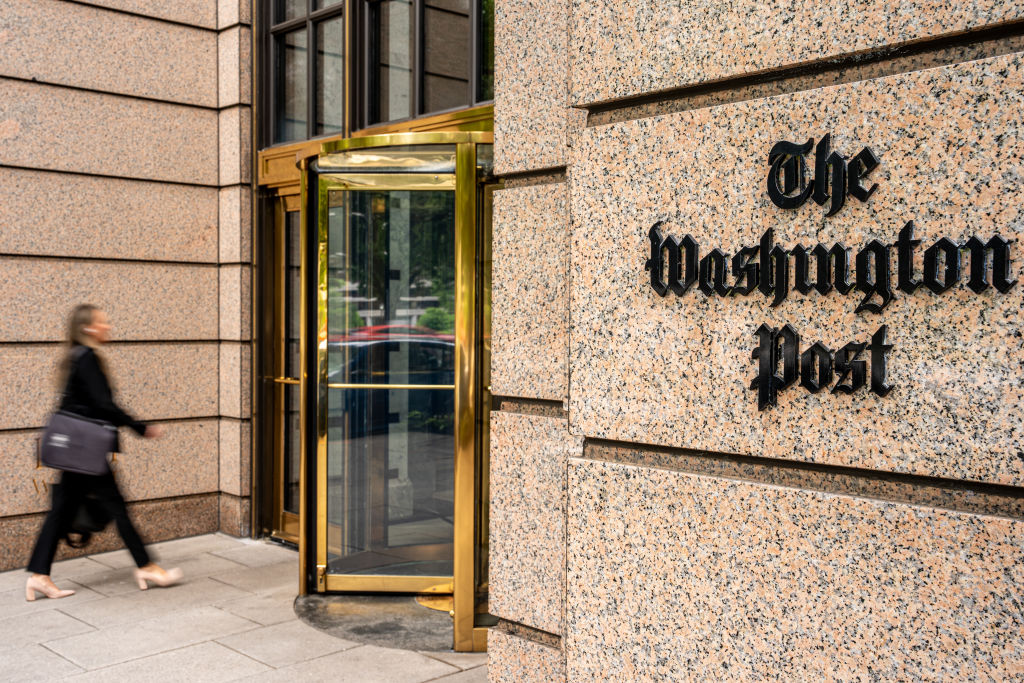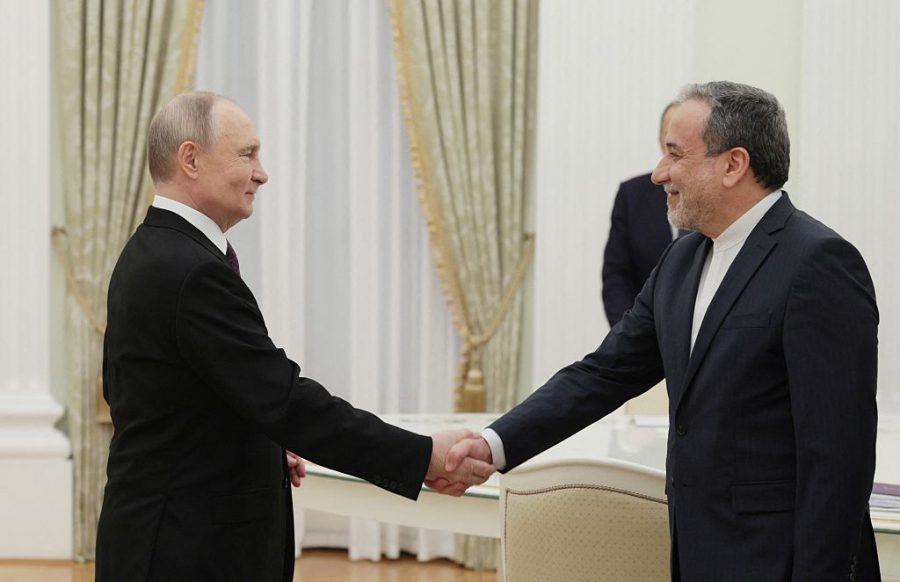On July 1, Colonel-General Mikhail Mizintsev, known as the “Butcher of Mariupol,” delivered a statement about recent attacks on apartment blocks in Odessa. In a familiar tone of Soviet bureaucratese, he read aloud: “To implement the provocation across June 26-28, twenty foreign mass-media representatives, as well as employees of the international organization UNICEF, were brought to Odessa [to watch] a mock attack, planned by the military administration of the Odessa region, on a social facility where a crowd of up to thirty anti-Russian activists had been prepared in advance to act as victims and casualties. Each participant in the staged scenes was paid $100 in advance and they also received a cash reward of $500 after the videos were filmed.” This is just one small example. It did not make headlines in Western media and it certainly is not the most bizarre or exciting claim of false flags but these everyday types of distortion set a scene where everything is a bit mad, so you stop noticing the general insanity all around you.
Russian political discourse is obsessed with fake news, or feiki, a term they use to denote any news that doesn’t correspond to the official ministries’ versions. Pro-Kremlin Russian think tanks, such as the unevocatively titled Social Research Expert Institute, release reports like “How They’re Killing the Free Press: Fact Checkers as an Instrument of Western Counter-Propaganda & Censorship,” to undermine Western efforts to pierce Russians’ information bubble. The television program Anti-feik is a treasure trove of accusations and revelations about Western fake news, plots, conspiracies and “Buchas.” To Ukrainians, the word Bucha will bring to mind Russian soldiers’ occupation and massacre of civilians in a small town of that name to the north of Kyiv. In Russian, the word Bucha is a neologism and it means a staged atrocity. From my interviews and Telegram analysis, it is clear that this term is a popular, if colloquial, shorthand for fake news. For example, Vladimir Orlov, head of the pro-Kremlin PIR Center think tank, used it in the following context: “Foreigners shouldn’t get involved with the pains and history of Slavic peoples. The French will not play or will play their own game, not intervening, but the Brits will be playing the game of causing more trouble, making more Buchas, creating more fakes. And I am sorry to say that, having many British friends… It is a new Great Game, we have to play and Russia will win. That’s it.” His accusation was not that Britain was responsible for the crime scene at Bucha, but that Britain was responsible for staging a fake crime scene at Bucha.
Given its entry into the Russian lexicon, it is important to revisit the coverage of Bucha, which is illustrative of the way in which Russia discredits evidence of its crimes in the audience’s mind before then folding its version of events back into one of the broader and more consistent master narratives it uses to explain Ukraine, the conflict and Russia’s role in the world. As soon as — but not before, even though they must have known it was coming — images of civilian corpses from Bucha began to spread on social media in the West, the Russian state and social media launched an intense campaign of deceit to sow confusion around what really happened. While journalists, intelligence specialists and disinformation experts confirmed that the victims were killed by the Russian forces that had occupied the town for a month before being driven out by the Ukrainian army, Russia had its own version, in which the whole thing was, predictably, a conspiracy against Moscow.
Russian media largely ignore stories of crimes against their own people, or people who can’t fight back, but spin any revelations of Russian crimes that make headlines in the West into outrageous stories. Bucha was no exception to this rule. At first, Russian TV stayed silent, waiting to see how much attention the story caught at home and abroad. By the morning of April 3 — two days after the news broke — it was clear that the massacres had outraged the world and unsettled even supporters of the Kremlin. More firestarters than firefighters, Russian media and propagandists launched an information offensive; Russian state TV personality Vladimir Solovev, for example, posted about it thirty-nine times in twenty-four hours on his popular Telegram account.
News agencies, newspapers and other media channels barraged their audiences with spiraling and ever more dissembling stories to discredit the Ukrainian version of events. There were claims that a small group of Ukrainian forces had killed the civilians as punishment for helping the Russians, or that the civilians had been killed accidentally by Ukrainian shelling, or that the bodies had only appeared two days after Russia left, or that the whole affair had been staged, just like the ostensibly faked chemical gas attacks in Syria. This dizzying range of narratives all appeared within twelve hours of each other on one Telegram channel, like a microcosm of mendacity.
Over the next day or so, the narrative began to stabilize around two axes: the Bucha affair was a staged massacre to cause the breakdown of peace talks and the dead civilians were the result of Ukrainian armed forces killing the local residents who had naturally supported the kind and helpful Russian troops, who were emphatically not the same Russian troops seen on camera shooting them at random, locking them in basements, and looting all their food. These two versions allowed the narrative to circle back towards the phantom specter of Ukrainian fascism and a Western conspiracy to use Ukraine to destroy Russia.
The initial contradictions were not the result of panic, however, but deliberate moves in a time-worn ritual whereby Russian media and politicians slowly dismantle the truth and then replace it with a forgery. The process starts with the idea of “wanting to ask questions” about the event being discussed (recalling RT’s tagline: “Question More?”), sowing doubt before offering alternative explanations expressed as mere suggestions or hypotheses, since the truth is ostensibly unknowable. One of the most egregious examples of this approach occurred when Russian and Russian-backed fighters in east Ukraine shot down passenger jet MH17, killing 298 passengers. The media’s immediate response was to interrogate random slivers of the actual story and slash away at them. To do so, they introduced fake characters such as “Carlos,” an imaginary Spanish air traffic controller working in Kyiv, who could “prove” Ukraine had downed the plane. This fabulism lay nestled between preposterous theories that the plane had been pre-loaded with corpses or that the Ukrainians shot it down in an attempt to assassinate Putin. Over time, a more stable Russian narrative — the Ukrainians did it and the West used it as a chance to malign Russia — emerged, fueling the argument that historical and external forces are always aligned against an innocent Russia, which is forced to pick through fragments of reality in order to discover the “truth” of the “provocations” committed against it. Those provocations in turn justify whatever action Russia takes and reinforces the broader mindset used to explain and excuse Russia’s aggression around the world.
The consequences of normalizing such a distorted view of events are devastating. They are designed to, and can only give rise to, further hysteria among the Russian elites and public. Russia uses its own crimes as further evidence that it is the victim and as a justification for committing ever more atrocities. This cycle, and its two stages of dispersing truth and reaffirming core narratives, is central to the Kremlin’s spectrum of allies approach. While some doubt may linger, preventing full, and undesired mobilization of support, many Russian viewers will be convinced of the injustice of the West pinning others’ crimes on their country, leading them to become ritual, if not especially enthusiastic, supporters, or at least loyal neutrals. The less credulous will at least feel unable to discern the truth and sink into apathy. This is an essential feature of Kremlin propaganda and population management: it uses techniques that simultaneously demobilize active opposition among those who are overwhelmed by trying to argue back against different interpretations and solidifies ritual support and loyalty among those who believe that Russia is the victim of external attacks, especially since the confusion is eventually deftly folded back into a more coherent alternative worldview. This is what gives the impression that Russians live in an alternate reality and explains the connection between the idea that nobody and nothing can be believed and the firm foundations of a broader Putinist worldview.
This is an extract from Jade McGlynn’s latest book Russia’s War — out May 15.

























